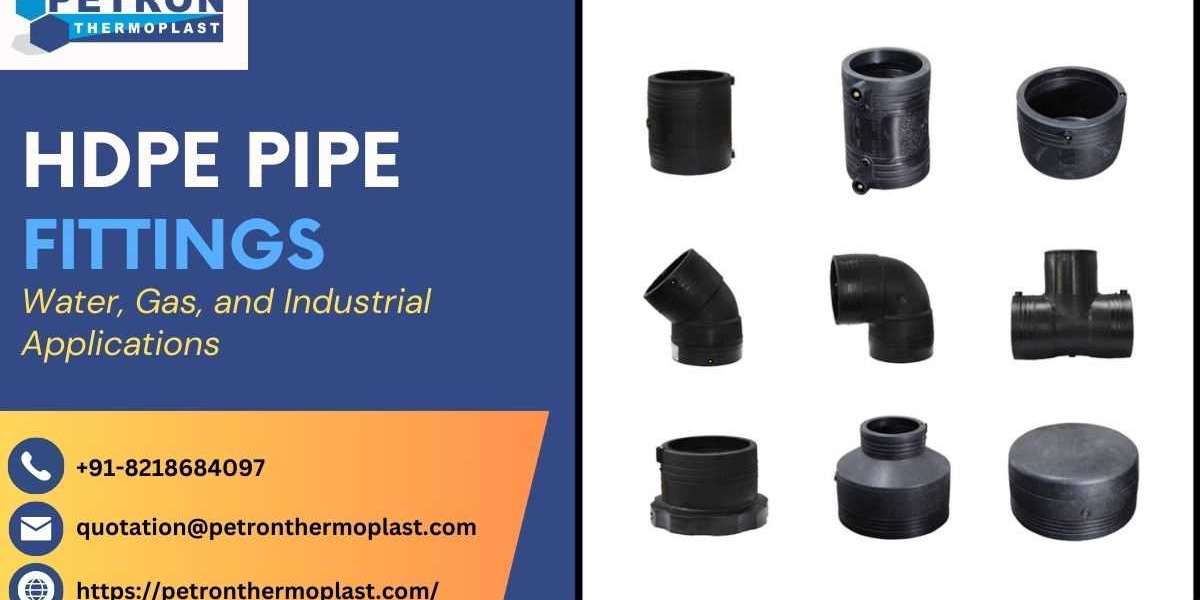When it comes to advanced piping solutions for modern infrastructure, HDPE (High-Density Polyethylene) pipe fittings are a top choice for engineers, contractors, and industries alike. Whether the application is in potable water supply, gas distribution, or heavy-duty industrial systems, HDPE fittings deliver exceptional performance, cost-effectiveness, and environmental sustainability. In this article, we’ll explore the many benefits of HDPE pipe fittings and how they serve as a cornerstone in water, gas, and industrial projects.
What Are HDPE Pipe Fittings?
HDPE pipe fittings are components used to connect HDPE pipes together to create an efficient and leak-proof piping network. These fittings come in various shapes and types, such as elbows, tees, reducers, end caps, couplers, and flanges, designed to ensure seamless flow, system flexibility, and durability.
Made from high-density polyethylene material, these fittings are renowned for their high tensile strength, resistance to corrosion, and long-term performance under harsh conditions.
Advantages of HDPE Pipe Fittings
- Corrosion Chemical Resistance
Unlike metal fittings, HDPE does not rust or corrode, making it ideal for transporting chemicals and corrosive substances in industrial settings. - Durability and Longevity
HDPE fittings can last more than 50 years, reducing maintenance costs and downtime. - Flexible and Impact-Resistant
HDPE has natural flexibility, which makes it ideal for seismic-prone or high-load applications. - Leak-Proof Joints
Using butt fusion or electrofusion techniques, HDPE fittings create strong, monolithic joints that prevent leaks and reduce energy loss. - Lightweight and Easy to Handle
Installation of HDPE pipe fittings is simpler, requiring less manpower and equipment. - Eco-Friendly
HDPE is recyclable, contributing to environmentally sustainable construction practices.
Applications of HDPE Pipe Fittings
1. Water Supply and Distribution
HDPE fittings are extensively used in municipal and rural water supply systems. Their non-toxic nature and resistance to biological growth make them safe for potable water applications.
Key Uses:
- Main water lines
- Irrigation and sprinkler systems
- Rainwater harvesting setups
- Borewell connections
2. Gas Distribution Networks
In gas pipelines, safety is critical. HDPE fittings are trusted for natural gas and LPG pipeline distribution systems due to their strength, flexibility, and superior jointing integrity.
Benefits:
- Zero leakage due to fusion joints
- Long service life even under pressure
- Safe in underground installations
3. Industrial Process Piping
Industries like chemical processing, food and beverage, mining, and pharmaceuticals demand materials that can withstand aggressive chemicals, high pressures, and variable temperatures.
HDPE fittings meet all these challenges with:
- Excellent chemical resistance
- Smooth inner surfaces (reduces friction and scaling)
- Compatibility with automation and large-scale systems
4. Sewage and Drainage Systems
HDPE fittings also find use in sewerage and stormwater management systems because they are:
- Leak-proof
- Resistant to root penetration
- Unaffected by acidic or alkaline wastewater
Common Types of HDPE Pipe Fittings
Here are some of the most commonly used HDPE fittings:
- Elbows (45°/90°): For directional changes
- Tees: To connect three pipes
- Reducers: For connecting pipes of different diameters
- Flange Adaptors: For joining HDPE to other pipe materials
- End Caps: To seal off unused pipe ends
- Electrofusion Fittings: For high-strength electrical welding
- Compression Fittings: For low-pressure systems and ease of maintenance
Why HDPE is the Future of Piping Systems?
With increased focus on sustainability, HDPE stands out as a material of the future. It offers the perfect blend of performance, versatility, and environmental responsibility.
- Safe for Drinking Water – NSF-certified
- Resistant to UV rays – Ideal for outdoor use
- Low Thermal Conductivity – Prevents energy loss
- Smooth Internal Walls – Improved flow efficiency
These characteristics position HDPE as a viable alternative to traditional piping materials like GI, PVC, and concrete, especially in long-term, critical infrastructure.
Choosing the Right Supplier – Why Petron Thermoplast?
If you are looking for reliable HDPE pipe fittings, Petron Thermoplast is one of the most trusted names in the industry.
Here’s why clients across the globe choose Petron Thermoplast:
- High-precision, ISO-certified products
- A wide range of customized fitting solutions
- Competitive pricing with bulk availability
- Prompt delivery and technical support
- Serving industries across water, gas, construction, and chemicals
Petron Thermoplast ensures you get not only the best products but also a partner who understands your unique project needs.
Conclusion
HDPE pipe fittings have revolutionized the piping industry with their exceptional strength, reliability, and eco-friendliness. Whether you're building a municipal water system, expanding a gas network, or installing complex industrial pipelines, HDPE fittings offer unmatched performance.
Backed by advanced manufacturing, proper jointing technology, and expert support, Petron Thermoplast is your ideal partner for HDPE solutions.








